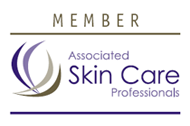Benefits Of Skin Care Therapies
Why Professional Skin Care Matters
Healthy, radiant skin is more than beauty—it’s confidence and well-being!
Here’s why seeing a licensed esthetician at OLLA BEAUTY is worth it:
Key Benefits:
Deep cleansing removes impurities and keeps pores clear
Hydration and nourishment restore your skin’s natural balance and glow
Customized facials target specific concerns like acne, aging, or sensitivity
Professional extractions are safe and effective—no scarring, no redness
Anti-aging treatments boost collagen, smooth lines, and improve skin firmness
Stress relief: facials relax your body and mind
Expert advice to maintain your results at home
At OLLA BEAUTY, each treatment is tailored to your needs using advanced methods and safe,
professional products
Take care of your skin—you deserve to feel fresh, confident, and beautiful every day!
Take care of your skin -
You feel fresh, confident and beautiful every day
Book a consultation and find out what modern skin care can do for you!

